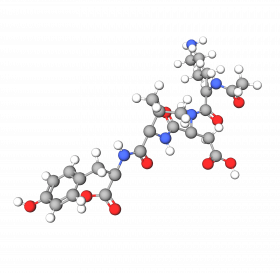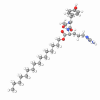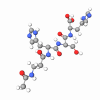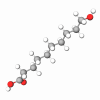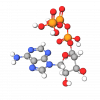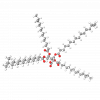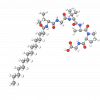Counteracts the force of gravity
Uplevity™ is a peptide invented to fight the undesired effects of a lack of skin firmness and cohesion by enhancing the natural elements that help to maintain collagen levels and elastin fibers correctly assembled, and facilitating the union between cells and the ECM (extracellular matrix). This ingredient not only proved to activate the FBLN5 and LOXL1 promoters but also increased both protein levels in vitro, that as we previously mentioned are necessary elements for a correct assembly of elastin fibers.
Moreover, it highly induced the synthesis of elastin. It also showed to upregulate genes related to FAs and collagen synthesis, highly inducing the synthesis of type I collagen as well. In vivo, the peptide showed to clearly reduce specific parameters linked to skin flaccidity and dermal disorganization, which translates into a better inner restructure of the dermis and skin cohesion.
UPLEVITY™ is an ideal ingredient to improve skin firmness by enhancing the natural elements that manage to maintain these properties in the skin, including elastin and collagen. Thus, it can be incorporated into firming and anti-aging formulations for both facial and body care, where skin cohesion and resilience want to be increased to minimize sagginess and flaccidity. In addition, it would be also useful to add slimming formulations to avoid flaccidity after losing weight.
What are the benefits of Uplevity™?
Acetyl Tetrapeptide-2 is an innovative tetrapeptide to increase skin firmness, avoiding sagginess and flaccidity.
Additional benefits include:
- Raises the activity of FBLN5 and LOXL1 promoters by 1.2-fold and 1.3-fold respectively (at 1 mg/mL), promoting the expression of these key elements and the correct assembly of elastin fibers.
- Augmented FBLN5 and LOXL1 protein levels by 2.3-fold and 1.7-fold respectively, which help elastin fibers to be assembled accurately.
- Upregulates the expression of genes involved in collagen synthesis and FAs (talin and zyxin among others), all of them beneficial elements that improve skin cohesion.
- Provides a statistically significant induction of elastin synthesis (21.7%), a protein directly linked to skin elasticity and recoil.
- Increases type I collagen synthesis by 47.3% (statistically significant value), helping to improve skin firmness.
- Improves skin cohesion, as in vivo (at 2%) it reduced the indentation (-9.5%) and the area (-23.2%) parameters, which are directly linked to lower firmness, and the fragmentation rate of the upper and deeper reticulum (-39.6 and -37.9% respectively), whose decreases are associated to an improvement of skin restructuration.
